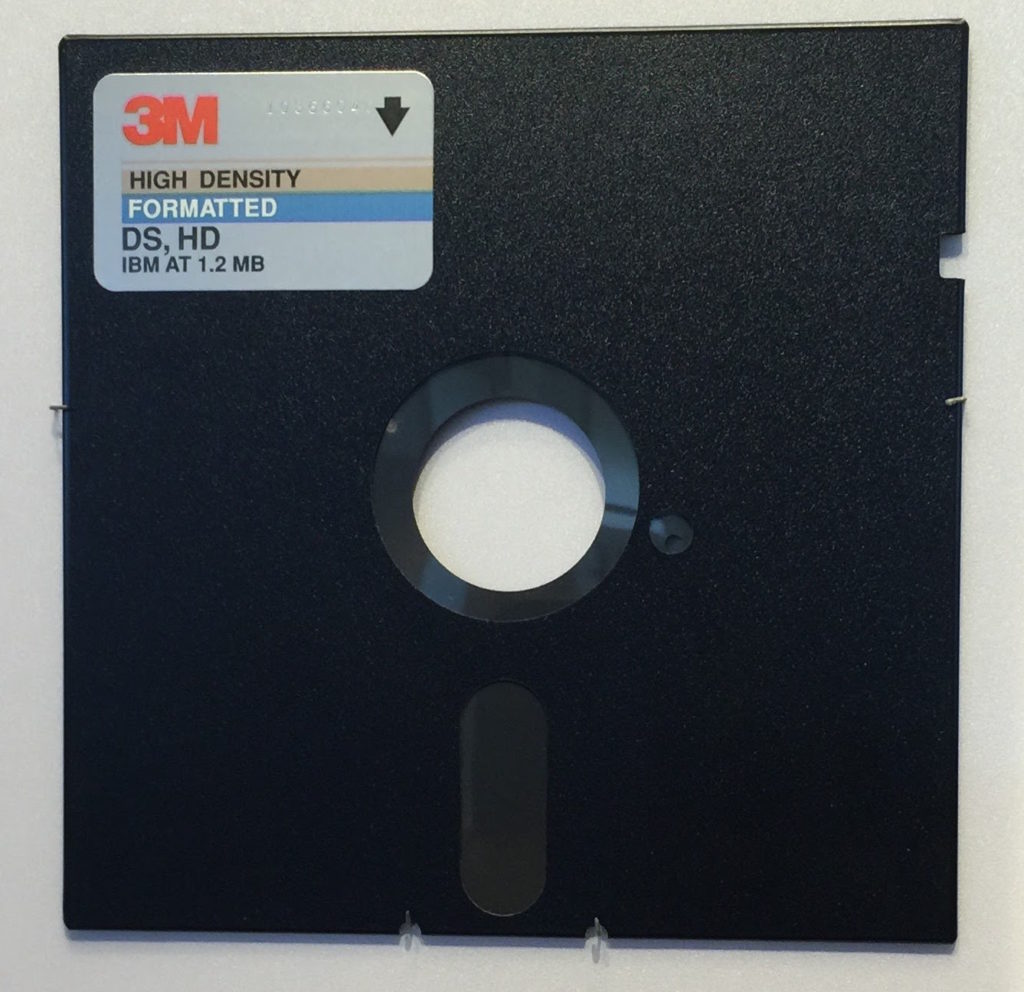
Expert Interview with Karin Forssell about TPACK et all : )
Met at CERAS 5:00pm to approximately 5:45pm


Expert Interview with Karin Forssell about TPACK et all : )
Met at CERAS 5:00pm to approximately 5:45pm

Reuben came over to talk about our Learning Problems – very productive talk that guided us further down the rabbit hole : )
Started a new document to gather my thoughts on a possible masters project.
This is what I’ve got so far:
Problem Statement
Communities, companies and countries have to be able to share knowledge and educate their peers in order to thrive. The traditional methods of doing so are through books, talks, documentaries, and interviews. We want to learn from the best, understand how they do it and be more like them. But sometimes we just want to talk to someone, interact with them – learn from a human being – even if it is not the expert – maybe even better if it is someone who speaks more like I do. How can technology enable this?
Research Question
How might we scaffold “experts” to create engaging hybrid courses?
Keywords
Thoughts
“While students rated the instructors very positively, the results also indicate that instructors still need to have their roles transformed pedagogically, socially, and technologically if they are to establish a more engaging and fruitful environment for online learning.” – Liu, X., Lee, S., Bonk, C., Su, B., Magjuka, R. (2005). Exploring Four Dimensions of Online Instructor Roles: A Program Level Case Study. Online Learning Consortium http://onlinelearningconsortium.org/sites/default/files/v9n4_liu_1.pdf
“This study found a change in the beliefs and teaching presence of the instructors from their initial resistance to online teaching to an approach which is mindful of the student experience and promotes a dialogical approach to online learning.” – Redmond, P., (2011) From face-to-face teaching to online teaching: Pedagogical transitions. ascilite 2011 Hobart: http://www.ascilite.org/conferences/hobart11/downloads/papers/Redmond-full.pdf
“In spite of the proliferation of online learning, creating online courses can still evoke a good deal of frustration, negativity, and wariness in those who need to create them.” – Vai, M. & Sosulski, K. (2015). Essentials of Online Course Design. A Standards-Based Guide, 2nd Edition. Routledge https://www.routledge.com/products/9781138780163
“Technology alone does nothing to enhance online pedagogy. According to Jacobsen, et al. (2002), the real challenge is to “develop fluency with teaching and learning with technology, not just with technology, itself” (p.44).” – Keengwe, J. & Kidd, T. (2010). Towards Best Practices in Online Learning and Teaching in Higher Education. MERLOT Journal of Online Learning and Teaching http://jolt.merlot.org/vol6no2/keengwe_0610.htm
Essentials of Online Course Design https://www.routledge.com/products/9781138780163
Towards Best Practices in Online Learning and Teaching in Higher Education http://jolt.merlot.org/vol6no2/keengwe_0610.htm
EXPLORING FOUR DIMENSIONS OF ONLINE INSTRUCTOR ROLES: A PROGRAM LEVEL CASE STUDY https://www.google.com/url?sa=t&rct=j&q=&esrc=s&source=web&cd=1&cad=rja&uact=8&ved=0CB4QFjAAahUKEwjQ4te54tfIAhUL1GMKHcGSCxA&url=http%3A%2F%2Fonlinelearningconsortium.org%2Fsites%2Fdefault%2Ffiles%2Fv9n4_liu_1.pdf&usg=AFQjCNHtnYf76HkFI-YrIcLhxBWoNPXhRw&sig2=RQVCKYoBJvqv-Gtu8oyCdw
(MY) THREE PRINCIPLES OF EFFECTIVE ONLINE PEDAGOGY http://files.eric.ed.gov/fulltext/EJ909855.pdf
Source Effects in Online Education http://research.microsoft.com/en-us/um/people/thies/las15-source-effects.pdf
The Five stage Model http://www.gillysalmon.com/five-stage-model.html
From face-to-face teaching to online teaching: Pedagogical transitions http://www.ascilite.org/conferences/hobart11/downloads/papers/Redmond-full.pdf
From On-Ground to Online: Moving Senior Faculty to the Distance Learning Classroom http://er.educause.edu/articles/2017/6/from-onground-to-online-moving-senior-faculty-to-the-distance-learning-classroom
Why some distance education programs fail while others succeed in a global environment http://www.sciencedirect.com/science/article/pii/S1096751609000281
Case Study: Challenges and Issues in Teaching Fully Online Mechanical Engineering Courses http://link.springer.com/chapter/10.1007/978-3-319-06764-3_74
TPCK and SAMR – Models for Enhancing Technology Integration (2008) http://www.msad54.org/sahs/TechInteg/mlti/SAMR.pdf
SAMR and TPCK in Action http://www.hippasus.com/rrpweblog/archives/2017/08/28/SAMR_TPCK_In_Action.pdf
SAMR: Beyond the Basics http://www.hippasus.com/rrpweblog/archives/2017/08/26/SAMRBeyondTheBasics.pdf
From the Classroom to the Keyboard: How Seven Teachers Created Their Online Teacher Identities http://www.irrodl.org/index.php/irrodl/article/download/1814/3253
A structure equation model among factors of teachers’ technology integration practice and their TPCK http://www.sciencedirect.com/science/article/pii/S0360131515000949
Examining Technopedagogical Knowledge Competencies of Teachers in Terms of Some Variables http://www.sciencedirect.com/science/article/pii/S1877042815006990/pdf?md5=1d1ccf6d1fb7088d7fda105f66d677c6&pid=1-s2.0-S1877042815006990-main.pdf
The Technological Pedagogical Content Knowledge-practical (TPACK-Practical) model: Examination of its validity in the Turkish culture via structural equation modeling http://www.sciencedirect.com/science/article/pii/S0360131515001189
Using TPCK as a scaffold to self-assess the novice online teaching experience http://www.tandfonline.com/doi/abs/10.1080/01587919.2015.1019964#aHR0cDovL3d3dy50YW5kZm9ubGluZS5jb20vZG9pL3BkZi8xMC4xMDgwLzAxNTg3OTE5LjIwMTUuMTAxOTk2NEBAQDA=
What Is Technological Pedagogical Content Knowledge? http://www.editlib.org/p/29544/
The role of TPACK in physics classroom: case studies of preservice physics teachers http://ac.els-cdn.com/S187704281201779X/1-s2.0-S187704281201779X-main.pdf?_tid=cf1faf84-81bf-11e5-8938-00000aacb35f&acdnat=1446509831_08753d5dcf76ed3f790bd4382aae1e31
Handbook of Technological Pedagogical Content Knowledge (TPCK) for Educators https://books.google.com/books?hl=en&lr=&id=lEbJAwAAQBAJ&oi=fnd&pg=PP1&dq=tPCK&ots=-p0TWk4RCI&sig=FElDYqBq7xyKcFWehvVRZ91LrNE#v=onepage&q&f=false
When using technology isn׳t enough: A comparison of high school civics teachers׳ TPCK in one-to-one laptop environments http://www.sciencedirect.com/science/article/pii/S0885985X14000229
Systematic Planning for ICT Integration in Topic Learning http://ifets.info/journals/10_1/14.pdf
What Is Technological Pedagogical Content Knowledge http://www.citejournal.org/articles/v9i1general1.pdf
Effect of a TPCK-SRL Model on Teachers’ Pedagogical Beliefs, Self-Efficacy, and Technology-Based Lesson Design http://link.springer.com/chapter/10.1007/978-1-4899-8080-9_5
Technological Pedagogical Content Knowledge as a Framework for Integrating Educational Technology in the Teaching of Computer Science http://link.springer.com/chapter/10.1007/978-1-4899-8080-9_11
Instruction: A Models Approach, Enhanced Pearson http://www.pearsonhighered.com/educator/product/Instruction-A-Models-Approach-Enhanced-Pearson-eText-with-LooseLeaf-Version-Access-Card-Package/9780134046884.page
So my turn came up to talk about myself for all the LDTers in class 🙂
I am pretty sure they recorded – going to ask Keith to send it to me.
Here are the slides:
The second half of the class was VERY productive. Working with Reuben we explored the problem area we are searching about : scaffolding the scaffolder; how to help people create good courses.
One big take-away for me was to look at how do extract value from experts.

Class started with a great discussion led by Tanner Vea.
Divided class into 3 groups. Each group was given a text to read and then present to the class. Ana and I presented.
They were also filming our class for a promotional video for the GSE.
We then had the “Who Am I?” talks from:
I’m up next week!!
Assignment:
Scholarship Briefs
Take two learning problem proposed in class (your own AND someone else’s). Research them in the literature, and extend it based on at least 2-3 scholarly sources. One should provide data about what is currently known about the learning “problem,” another should suggest a possible approach to designing a solution. Enrich your learning problem statements using information you find and add citations to your sources. Post your updated “problems” here.
Response
Alex is a motivated young developer who wants to teach people how to program for the new AppleTV OS that recently came out. He has never taught before and thinks that offering this course online will supplement his income.
He has looked at several MOOCS, online courses, course marketplaces, YouTube videos and other several examples he found online. He feels like he does not know where to start in creating, organizing and delivering the course material.
How will he engage with the students? How will the students help each other? How will he handle student’s questions? How will he assess if his teaching is effective? How will he track the progress of all of the students?
To address this challenge he could use frameworks such as Technological Pedagogical Content Knowledge (TPACK) and SAMR Model to guide him through the process.
Resources providing data about what is currently known about the difficulties and frustrations in creating and managing online courses:
Resources providing possible approaches to designing a solution:
Today we had the pleasure to hearing from 3 more LDTers 🙂
Also had group discussion about are “Learning Problem”… mine was definitely too broad and was more of a “Knowledge Problem”… have to refine it and phrase it better…
Original:
“Alex is a motivated young developer who is fascinated with the new AppleTV OS that recently came out. He learned how to create apps for it and it was quite tricky, even though he has experience with iOS Apps already. He understands this is valuable content he’s acquired and knows that he can make some money out of this (and he needs it). He now has to decide which platform(s) to use to distribute his content. To address this challenge he needs to find out what are the available platforms out there, their market share, revenue sharing business models as well as usability, feature sets and appear. In order to do so he must research the topic online, talk to other users and subject matter expert for some guidelines and pointers.
Learning Problem Statements v 1.0
“In preparation for the expert interview, write at least three short posts, each one identifying one “learning problem” you might want to solve in about one paragraph. Include: WHO needs to learn WHAT and WHY it is important. For each, name three people who could help you learn more about this challenge. Post each “problem” here as a post on this discussion (not on a google doc as I showed in seminar).”
Three people who could help learn more about this challenge:
Good session again today. Who am I? sessions started. We had that pleasure to listen to:
Matej Jan – funny – here’s his rehearsal video
Colin – languages
MingMing – motivational
On the second half of the class we had the visit of EdCareers for some valuable information about internships, available resources and how to plan for post Stanford.
Class Notes:
Notes Followup:
Homework:
Think of 3 people and write about what they need to learn, why and how you propose they might learn it.
____, is a _____.
He wants to ___.
In order to do so, ___
To address this challenge I seek to ___ in a way that ___.
In today’s class we went over the general gist of the program, talked to LDTers from last year and shared our Compass Exercise (first homeworl) with the person sitting next to us.
I had the great pleasure of experiencing Matej’s pixel art version of the exercise!
 To be able to be where the foundations of the computer revolution was made is such an honor. The technological world as we know it today was pretty much invented here, created here and manufactured here.
To be able to be where the foundations of the computer revolution was made is such an honor. The technological world as we know it today was pretty much invented here, created here and manufactured here.
As you arrive at the museum, you see the future, being used in the present time – the Tesla Recharging Stations. Electric cars have made it to stores and very very soon, self-driving cars will also be available for general use. The future is arriving faster and faster.
During our guided visit, we were asked to choose a person we knew well and look/experience the museum as they would – as a learner – so that we could then reflect upon how we could make the experience better.
I was thinking of my father since he’s always fascinated with how fast things are advancing and how humans are able to discover new things and build upon them. Here are my thoughts: